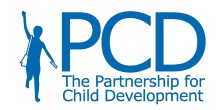 Funding
Funding
National Planning
Currently, more governments are moving towards a decentralized level of implementation which sees plans drilled down to the local level. In these cases, planning processes prioritising village-level settings are streamed into the district or regional level plans which then form the basis for budgeting at the national level. When budgeting at a national level, a certain level of compliance with national poverty reduction strategies and sector plans is ensured, these sectors typically include agriculture, education, health and social protection.
Budgets and External Funding
National plans and budgets for HGSF programmes depend on government priorities. The degree to which HGSF is included in initial planning and budgeting process will determine whether the programme gets resources from the national budget and whether it benefits from general budget support allocations. In most countries external support is provided to the programme, and funding for the programme comes from food assistance channelled through external agencies, NGOs, as well as from government in-kind or cash contributions. As the programme becomes national, it needs to have a stable source of funding, independent of external support. This may be through government core resources or through development funding.
Key Resources
- State of school feeding Worldwide (Chapter 4: What are the costs of school feeding? pp. 61-66, Chapter 5: How do development partners support school feeding? pp.71-85)
- Financial & Monitoring Assessment of the Ghana School Feeding Program
- For Protection & Promotion (Chapter 3 Financing of and Spending on Safety Nets pp. 45-82; Chapter 8 Assisting Traditionally Vulnerable Groups pp. 345- 375)
- The Enabling Environment for Transitioning to Sustainable Programmes (Presentation Download)
- New perspectives on financing for school feeding (Presentation Download)




